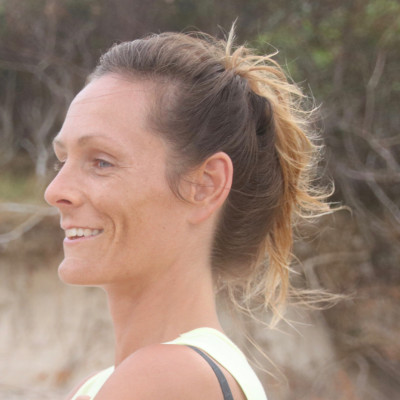
Working as a researcher in Physical Oceanography, I feel like I have found that perfect way to combine my passion for the ocean and for maths.
Where did you grow up?
I grew up on a sailing boat travelling around Australia until I was 6, and then in Adelaide for all of my schooling years.
Were you always interested in your current field?
I have always loved the ocean and been passionate about the environment, and in high school I discovered my love for Mathematics and Physics, but I didn't know that I could bring them together. As an undergrad I studied Engineering and Marine Science, and then worked in consulting as a Coastal and Ocean Engineer for a few years. Through this I had the opportunity to learn about ocean modelling, which led to me explore how I could further my knowledge of ocean physics and ocean models. I pursued a PhD in Physical Oceanography, with a focus on the interactions of oceanic processes of different scales and the impact on ocean predictability. Now working as a researcher in Physical Oceanography, I feel like I have found that perfect way to combine my passion for the ocean and for maths.
Are you (still) working from home? If so, how’s it going?
I enjoy the increased focus I can achieve when working from home. I've found collaboration over Zoom meetings really quite effective during Covid. However, large conferences where the greatest collaborations come from informal chats will be challenging.
What projects are you working on?
I work on combining ocean measurements with numerical models to improve ocean forecasts. Like the weather, the ocean circulation is chaotic and cannot be predicted purely by solving the discretised equations of motion in a numerical model. We observe the dynamic height and temperature of the ocean surface from satellites, and subsurface ocean properties from moorings, profiling floats and autonomous gliders. I work on methods to combine these observations with the ocean state estimate from a numerical model in a dynamically consistent way, such that we can improve predictions. My focus is the East Australian Current, which is a particularly dynamic region and has a strong influence on weather, biological productivity, larval dispersal and recruitment, foraging behaviour of pelagic fish and megafauna, and the changing climate along the highly populated southeast coast of Australia.
What do you want people to know about the work that you do?
There are so many physical processes that interplay in the ocean, across a spectrum of spatial and temporal scales. These processes interact with the atmosphere and drive the biology and chemistry of the oceans. Recent increases in computer power and advances in ocean observations are allowing us to explore these interconnections in more and more depth, which is exciting. This increased understanding will help us better manage our oceans and better understand their response to a changing climate.
Why do you love what you do?
I love that what I do gives me the freedom to explore the deep scientific questions that remain unanswered but that, at the same time, has real tangible benefits to our environment and our society. I love that I get to collaborate with people across the globe and across various disciplines.
What is one specific thing that you have achieved (research or otherwise professionally) that you are most proud of?
I am most proud of the work that I have done in the East Australian Current, mostly through projects funded by the Australian Research Council. This oceanic region is a very well observed Western Boundary Current region, and much understanding of the circulation has been gained from decades of observations. I am proud to have been the first to use innovative variational data assimilation techniques to assimilate a wide variety of ocean observations into high resolution models of the region, allowing us to both gain a deeper understanding of the current's dynamics and to assess how various observations are useful in informing numerical models. My goal is to advance these techniques for prediction at finer scales, which are particularly important for fisheries, and generate an optimal system for ocean prediction in the region.